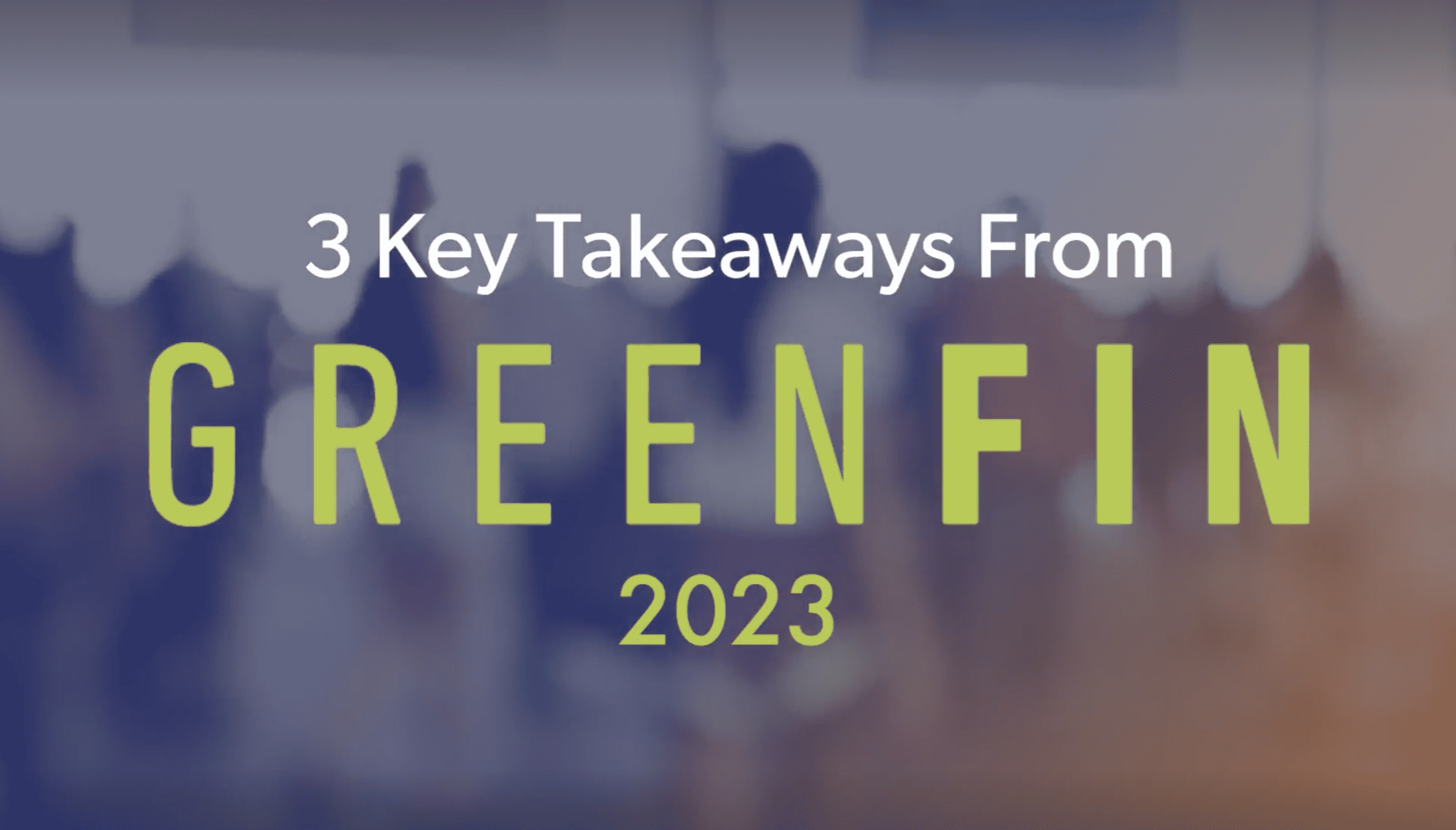GreenFin 2023 brought over 900 sustainability leaders and learners together for a high-powered update on ESG reporting and investment trends. Energy and enthusiasm around sharing best practices and innovative approaches were the hallmarks of the event, with representation from standards setters, national and regional political offices, corporate sustainability stalwarts, and global asset managers.
There was agreement across the board that we are entering a new and more urgent phase. Europe and the U.S. are positioning to get on intersecting tracks, and both see the need to push for more streamlined and effective regulation.
It is no secret that over the past year, misperceptions and fear-based rhetoric have muddied the waters. Conservative demands to shrink or dismantle the ESG world may seem untethered to the real work being done, but there is common ground that needs to be explored. The coming months and years should see an extension of olive branches intended to close the gap.
We also saw differing viewpoints on where the next big sustainable bang for the buck might be found. Some corners believe, for example, that the 401(k) market will yield the next great wave of transparency and, eventually, carbon-free portfolios. Others saw no reasonable path for end-user investors to demand their retirement assets be linked to fossil fuel divestment or even broader impact.
All the dialogue underscored that ESG’s time is now, even if there are miles to go before it is truly standardized. Here are three key takeaways that can inform action at the crossroads of sustainability, finance, and communications:
1. Progress transcends uncertainty about ESG reporting standards
Both from an investment perspective (fund labeling and the concept of achieving impact through the public markets) and the corporate reporting perspective (voluntary or mandatory), we’re currently waterskiing through a quicksand hedge maze. The path to the best outcome is uncertain, but forward momentum is crucial to staying upright. And the market is changing around us, even as we take bold steps.
Elizabeth Seeger of the ISSB provided what clarity she could on the heels of the announcement that IFRS is locking in ISSB standards as part of financial reporting. She noted how far we’ve come in the steady march towards convergence of frameworks and reporting standards, although there are plenty of question marks yet to be resolved.
What is not in doubt? That ESG and sustainability are ripe for continuous improvement. Thoughtful action today puts companies in a strong position for tomorrow, keeping them in a state of readiness for the regulatory changes to come.
2. Everyone’s had enough of the “alphabet soup.” Our cups runneth over, regardless…
There’s a universal acknowledgment that the sustainability landscape has enough acronyms to start its own bureaucratic nation-state. And yet, with each eye roll about the “jargonic proliferation,” another abbreviation is referenced.
Make no mistake, they are all important, and the goal is to eventually consolidate the language into a streamlined, cross-border, and cross-industry lexicon. But just now, we can be forgiven for a state of paralysis when confronted with the IFRS’ embrace of ISSB, the emergence of TFND modeled after TFCD, and the roll call of GRI, CDP, SBTi, CSRD, EFRAG, ESRS, SFDR, and of course ESG as the much-maligned term of record.
For anyone who wants to play along, write a sentence using all the relevant acronyms. It can be done! And you could win the grand prize of a lonely corner at next weekend’s cocktail party.
There is broad acknowledgment that the overly complex nature of sustainability is hurting corporate efforts to communicate and attract capital. As standards solidify, there will be opportunities to rein in the acronyms and simplify the conversation.
Until then, to those seeking relief from the onslaught of acronyms, I invoke the immortal words of Inigo Montoya: “Get used to disappointment.”
3. Sustainability – corporate and financial – is primed for a new messaging strategy.
GreenFin provided a firehose of crucial information, updates, and innovations. There was an undercurrent of frustration, though, about the politicization and outright demonization of ESG by some prominent voices in the U.S. The overriding perspective is that the pushback is semantic, catalyzed by political rallying cries that are largely based on a misunderstanding of ESG’s role and the threat of losses in high-carbon industries.
The friction introduces a range of uncertainties. Is the term “ESG” on its way out? Will the future for U.S. corporations really be grounded in double materiality (reflecting material impacts made by external factors on the company, as well as the impact made by the company on external environments and society)? Will fund labeling further confuse the investing public?
All these and many, many, many more questions revolve around one glaring need: steady communications based on a clear message about what ESG means for corporations and investors.
There is more work to be done to promote consistency across frameworks and engender confidence that the reporting system is trustworthy. While that plays out, getting the sprawling sustainability universe on the same page seems daunting – but the playbook is not unique. Gather perspectives, create clear definitions, and simplify the message. Such an exceptionally important global development demands a thoughtful, strategic, and inclusive exercise to set a new paradigm for communicating about ESG issues.




